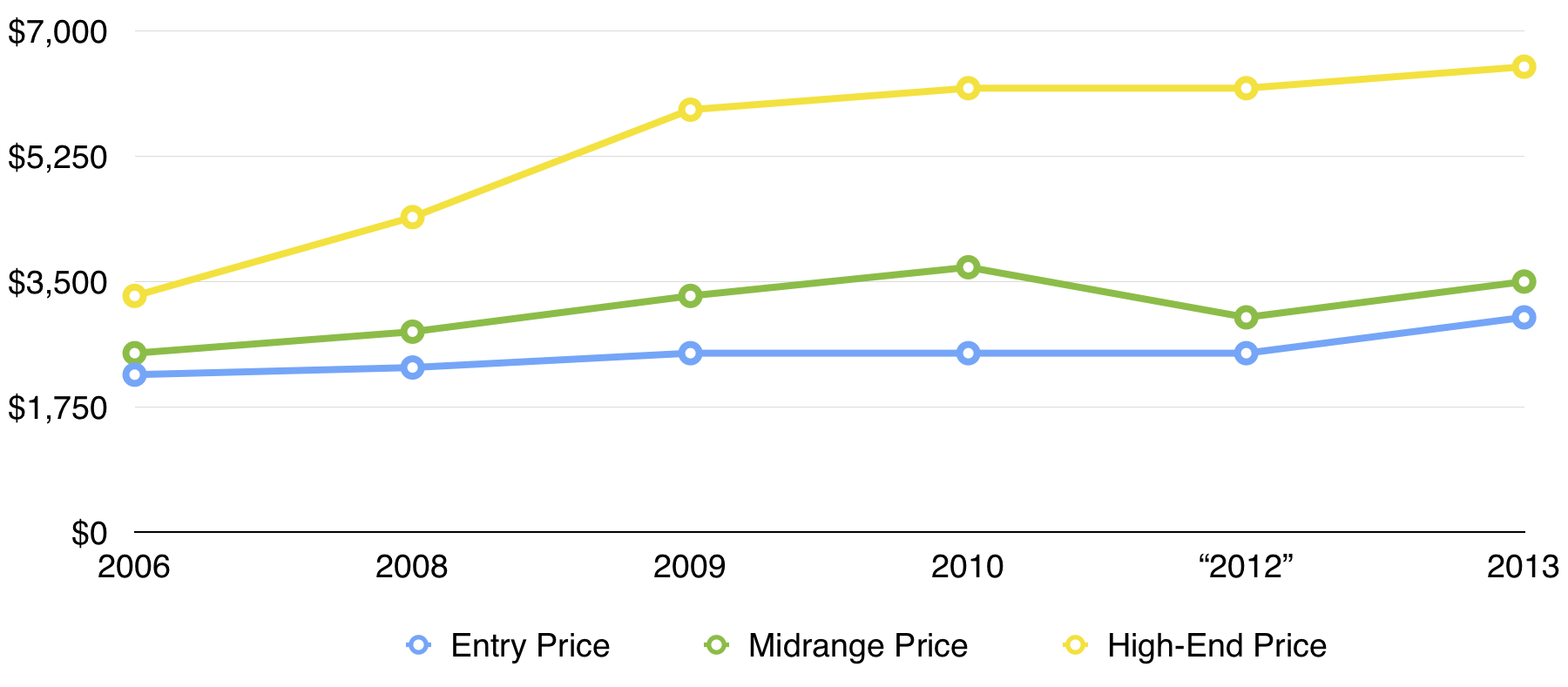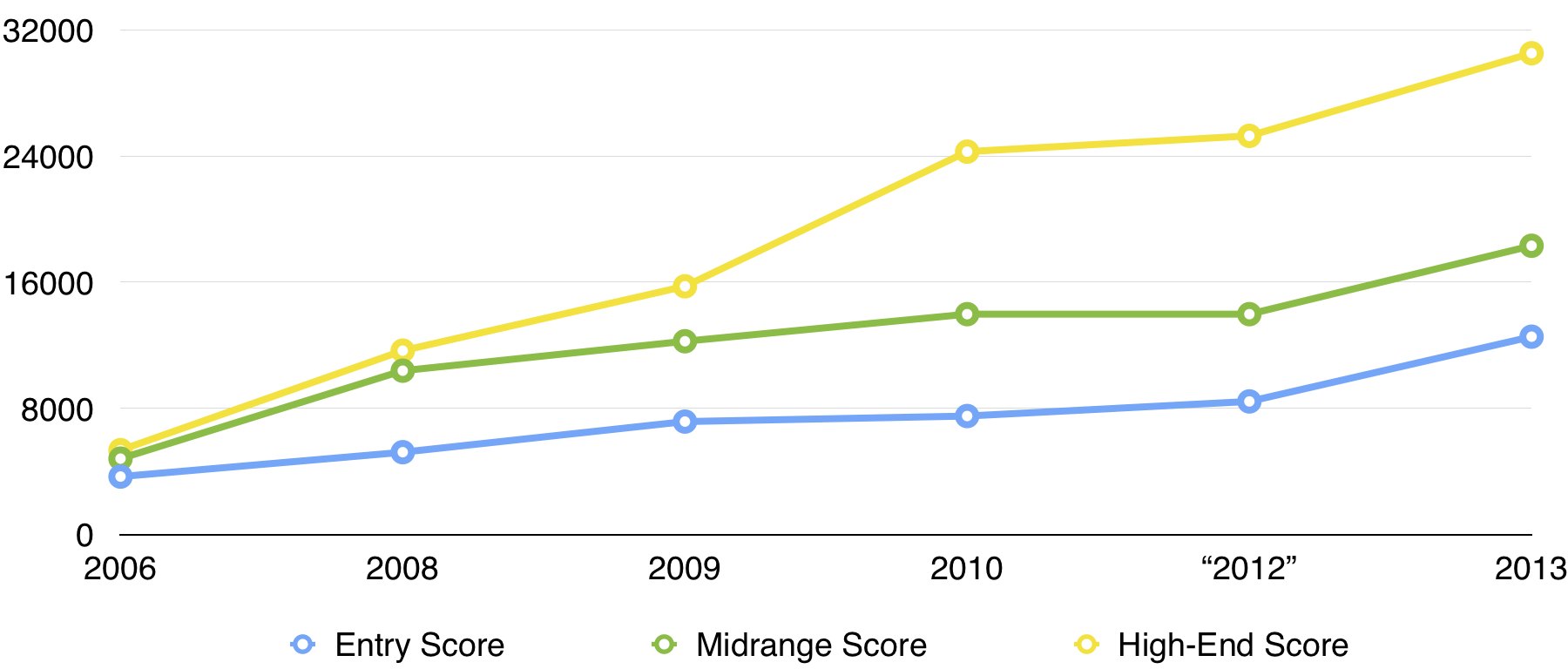Mac Pro Pricing Over Time
The new Mac Pro feels very expensive when configured with a few options, and it’s easy to feel that it’s much more expensive than previous Mac Pros.
And it is. But the big jump actually started with the 2009 model, when Intel started running out of ways to make the high-end Xeons better except by raising their core count, which drove the price up dramatically.
Here’s the actual history of Mac Pro prices from Everymac:
| Entry Level | Midrange CPU | High-end CPU | |||||||
|---|---|---|---|---|---|---|---|---|---|
| Generation | Cores | Clock | Price | Cores | Clock | Price | Cores | Clock | Price |
| 2006 | 2 | 2.0 | $2199 | 4 | 2.66 | $2499 | 4 | 3.0 | $3299 |
| 2008 | 4 | 2.8 | $2299 | 8 | 2.8 | $2799 | 8 | 3.2 | $4399 |
| 2009 | 4 | 2.66 | $2499 | 8 | 2.26 | $3299 | 8 | 2.93 | $5899 |
| 2010 | 4 | 2.8 | $2499 | 6 | 3.33 | $3699 | 12 | 2.93 | $6199 |
| “2012” | 4 | 3.2 | $2499 | 6 | 3.33 | $2999 | 12 | 3.06 | $6199 |
| 2013 | 4 | 3.7 | $2999 | 6 | 3.5 | $3499 | 12 | 2.7 | $6499 |
It’s hard to define “midrange” in some generations, so I made my best estimates. It’s also debatable whether the 2013 “high-end” should be the 8- or 12-core model since Turbo Boost makes it weird now, but I chose the 12-core to be more comparable with the previous generations. And this is based on CPU upgrades only, since it’s easiest to find data for those and they’re usually the most expensive upgrades in the lineup.
The trend is even more clear when graphed:

Mac Pro prices have always crept upward, but the biggest jumps aren’t recent.
It’s not even as much of a ripoff as you might assume. In the 2006 and 2008 generations, the range of performance within the lineup was smaller, especially between the midrange and high-end. Once Intel started ramping up core counts and Turbo Boost in the last few generations, the midrange was no longer 10–20% slower than the high-end — it became more like 50–75% slower at fully parallel tasks.
Here are those same Mac Pros with their Geekbench 3 scores graphed (32-bit multicore):

Scores for the 4- and 12-core 2013 models are estimated from the 6-core’s.
Prices have stayed mostly in proportion to parallel performance. The difference between the low and high end is much bigger than it used to be.
But don’t feel too bad about those high-end CPUs being so far out of reach. The core-count hikes that yielded such massive parallel improvements have come with stagnation or regression in single-threaded performance, which is still very important to many common tasks, so today’s highest-end options are either very similar to the lower-end choices or actually worse for many buyers. As their prices have crept upward, the high-end options have become more specialized at the expense of economy and some general-purpose performance.
And that’s now true of the entire Mac Pro line: it’s no longer the fastest Mac at single-threaded tasks (the highest-end iMac is), and the jobs that the Mac Pro does faster than other high-end Macs are becoming fewer and more specialized.
You can still find good value in the Mac Pro line (in the 2013 lineup, just like the “2012”, the 6-core is a great value), but it’s pushing further into specialty uses as the high-end iMac and 15” MacBook Pro options keep closing the gap for more people.